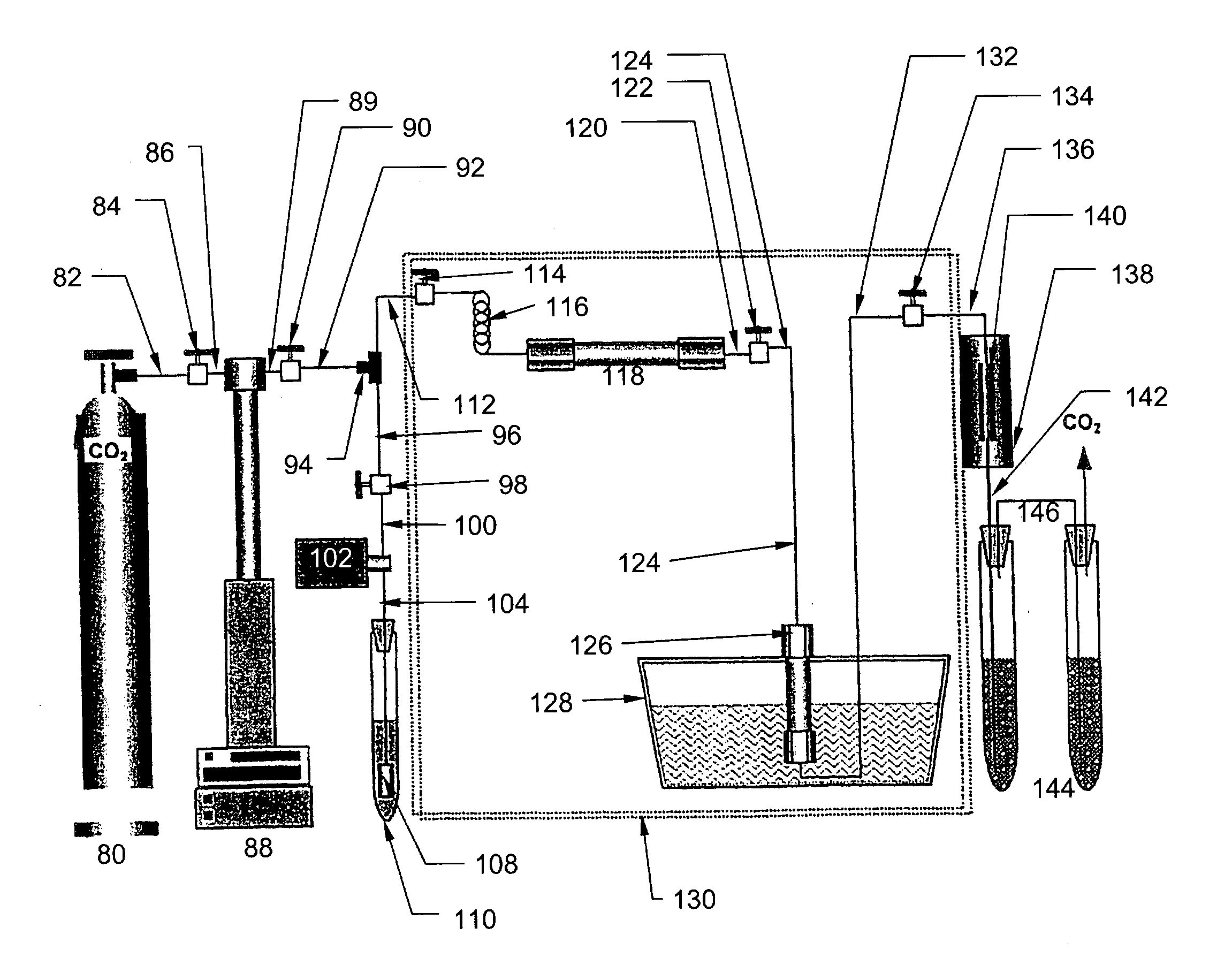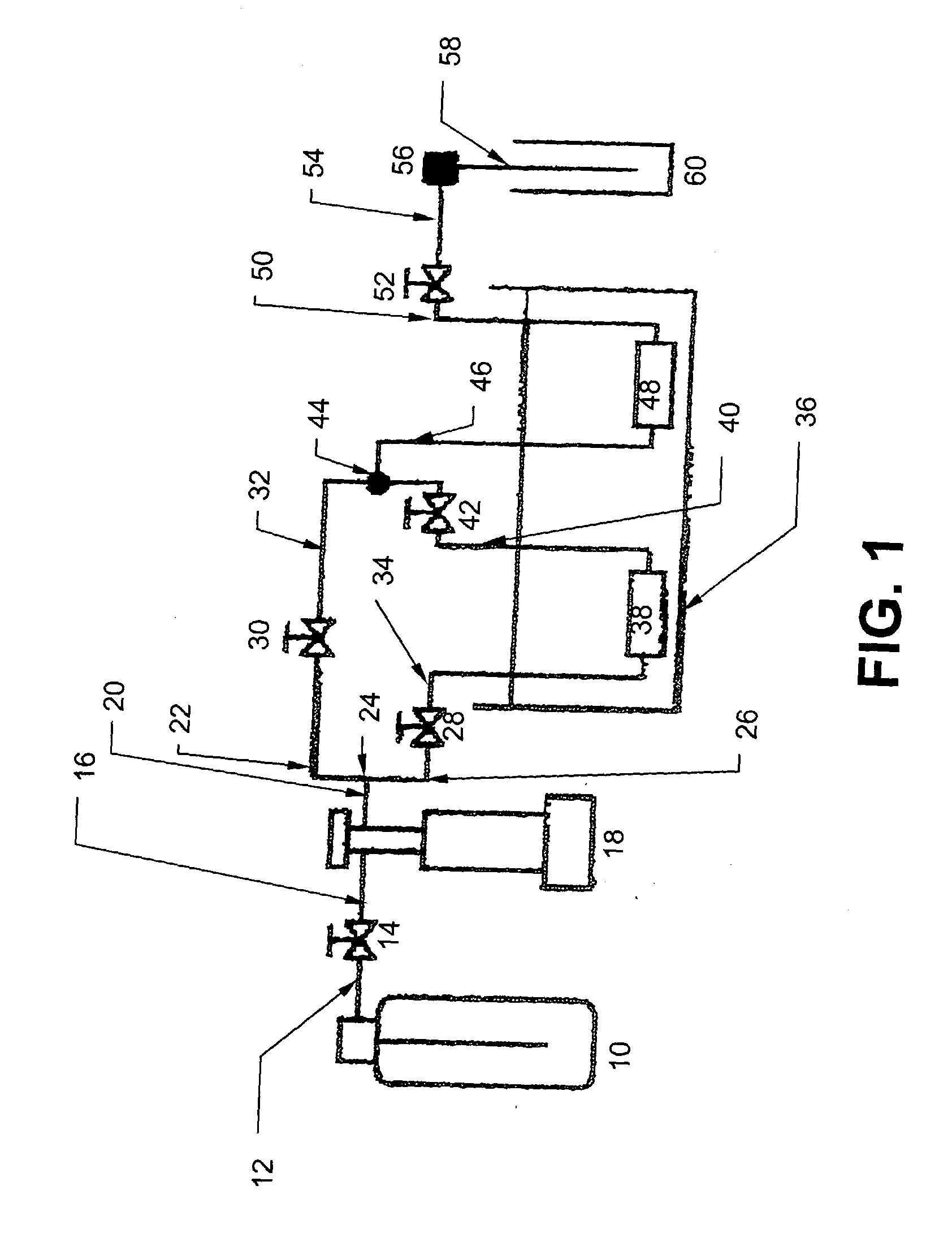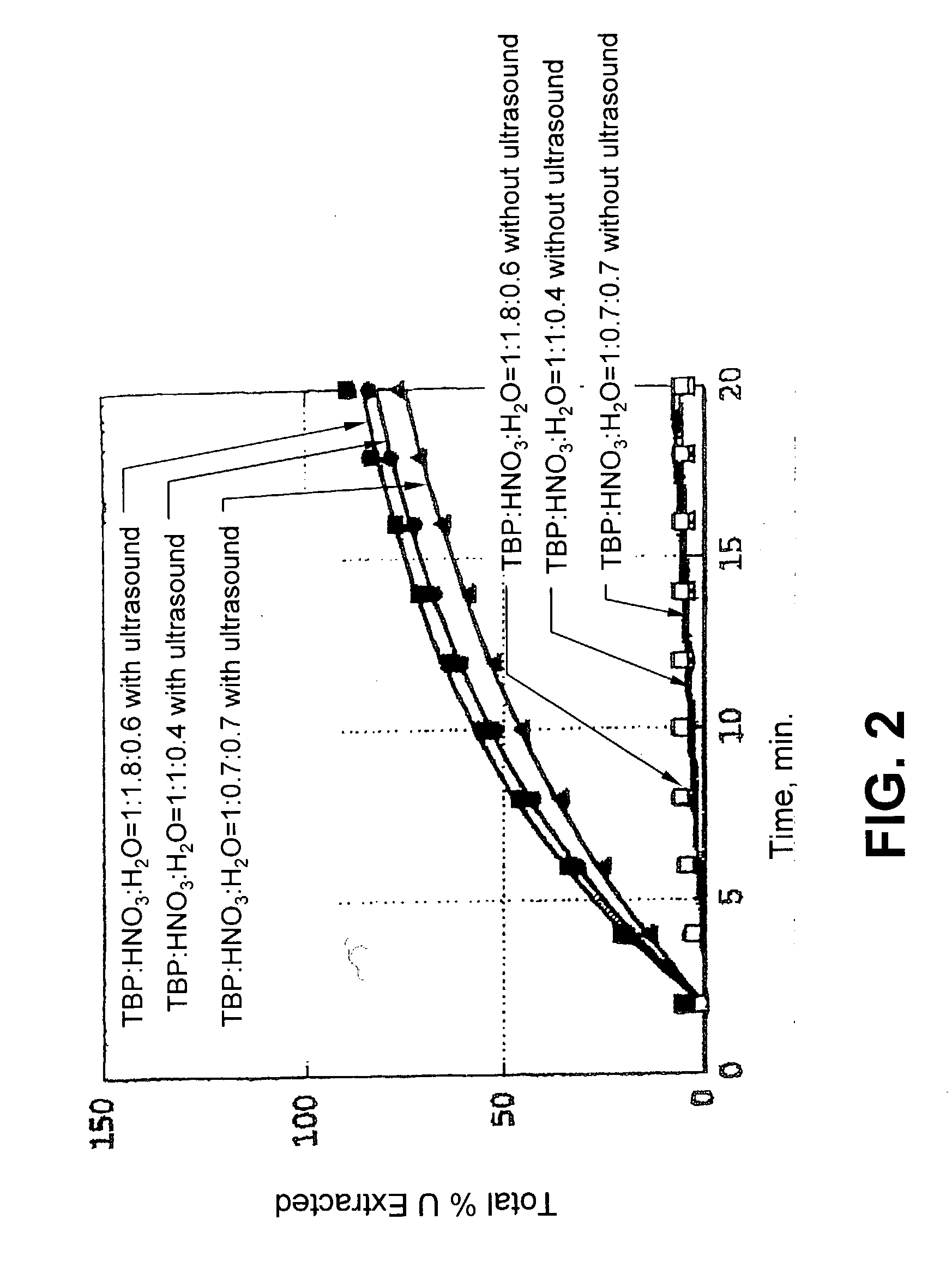Ultrasound enhanced process for extracting metal species in supercritical fluids
a supercritical fluid and ultrasonic enhancement technology, applied in the field of extracting metals and/or metalloids, can solve the problems of low yield of purified metals, inability to decontaminate such wastes on an industrial scale, and large amounts of solvents and acids in the conventional acid dissolution followed by solvent extraction process
- Summary
- Abstract
- Description
- Claims
- Application Information
AI Technical Summary
Benefits of technology
Problems solved by technology
Method used
Image
Examples
example 1
[0039] Ultrasound-Enhanced Dissolution of UO.sub.2
[0040] A particular embodiment of an improved metal dissolution technique is as follows and described in Enokida et al., "Ultrasound-Enhanced Dissolution of UO.sub.2 in Supercritical CO.sub.2 Containing a CO.sub.2-Philic Complexant of Tri-n-butylphosphate and Nitric Acid," Ind. Eng. Chem. Res. 2002, 41(9), 2282-2286, which is incorporated herein by reference.
[0041] In the system described below, the TBP / HNO.sub.3 / H.sub.2O complex probably extracts UO.sub.2 by oxidation of U(IV) in solid UO.sub.2 to U(VI), forming UO.sub.2.sup.2+, followed by the formation of UO.sub.2(NO.sub.3).sub.2.multidot.2TBP in SF--CO.sub.2. UO.sub.2(NO.sub.3).sub.2.multidot.2TBP is highly soluble in SF--CO.sub.2, exceeding 0.45 mol L.sup.-1 in CO.sub.2 at 313 K and 20 MPa. It is the most soluble metal complex in SF--CO.sub.2 reported in the literature thus far.
[0042] The supercritical fluid system is illustrated in FIG. 1. As described further below, this syste...
example 2
An Apparatus for Ultrasound Enhanced Dissolution of Uranium Oxides in SF--CO.sub.2
[0060] In this embodiment, an apparatus (shown in FIG. 5) and method are provided for enhanced dissolution of uranium oxides by the application of ultrasound to an SF--CO.sub.2 reaction system containing HTTA.
[0061] The uranium oxides included depleted UO.sub.3 (Alfa AESAR, Ward Hill, Mass., 99.8%), UO.sub.2 (Alfa AESAR, 99.8%), and U.sub.30.sub.8 (NBS Standard Reference Material). The ligands HTTA and TBP also were obtained from Alfa AESAR and used without further purification. SFE-grade carbon dioxide (Air Products, Allentown, Pa.) was used for all extractions. Extracted products were collected in a collection system 144 containing a trap solution (ACS-grade trichloromethane obtained from Fisher, Fairlawn, N.J.) through the restrictors 140 made from 150 mm lengths of deactivated fused silica, 50 .mu.m i.d., purchased from Polymicro Technologies (Phoenix, Ariz.), and a restrictor heater 138. Uranium w...
example 3
[0064] Dissolution of UO.sub.3 in SF--CO.sub.2 Using the Apparatus of Example 2
[0065] The direct reaction of UO.sub.3 with HTTA in large excess efficiently occurred in a static reaction cell system. Although high conversion efficiency to UO.sub.2(TTA).sub.2.multidot.H.sub.2O was observed, the complex was not efficiently transported from the cell 126 in SF--CO.sub.2. Instead the complex remained in the reaction cell as a powdery, orange-colored substance. It was necessary to add TBP to the extraction system to enable transport of the uranium complex. Because TBP is a stronger Lewis base than H.sub.2O, it can replace the coordinated H.sub.2O molecule to form the adduct UO.sub.2(TTA).sub.2.multidot.TBP, which is quite soluble in SF--CO.sub.2.
[0066] The effect of ultrasound application on the dissolution of UO.sub.3 in a SF--CO.sub.2 stream containing TBP and HTTA is illustrated in FIG. 6. The reaction conditions were 60.degree. C. and 150 atm using an SF--CO.sub.2 stream modified with ...
PUM
| Property | Measurement | Unit |
|---|---|---|
| Temperature | aaaaa | aaaaa |
| Temperature | aaaaa | aaaaa |
| Fraction | aaaaa | aaaaa |
Abstract
Description
Claims
Application Information
 Login to View More
Login to View More - R&D
- Intellectual Property
- Life Sciences
- Materials
- Tech Scout
- Unparalleled Data Quality
- Higher Quality Content
- 60% Fewer Hallucinations
Browse by: Latest US Patents, China's latest patents, Technical Efficacy Thesaurus, Application Domain, Technology Topic, Popular Technical Reports.
© 2025 PatSnap. All rights reserved.Legal|Privacy policy|Modern Slavery Act Transparency Statement|Sitemap|About US| Contact US: help@patsnap.com



